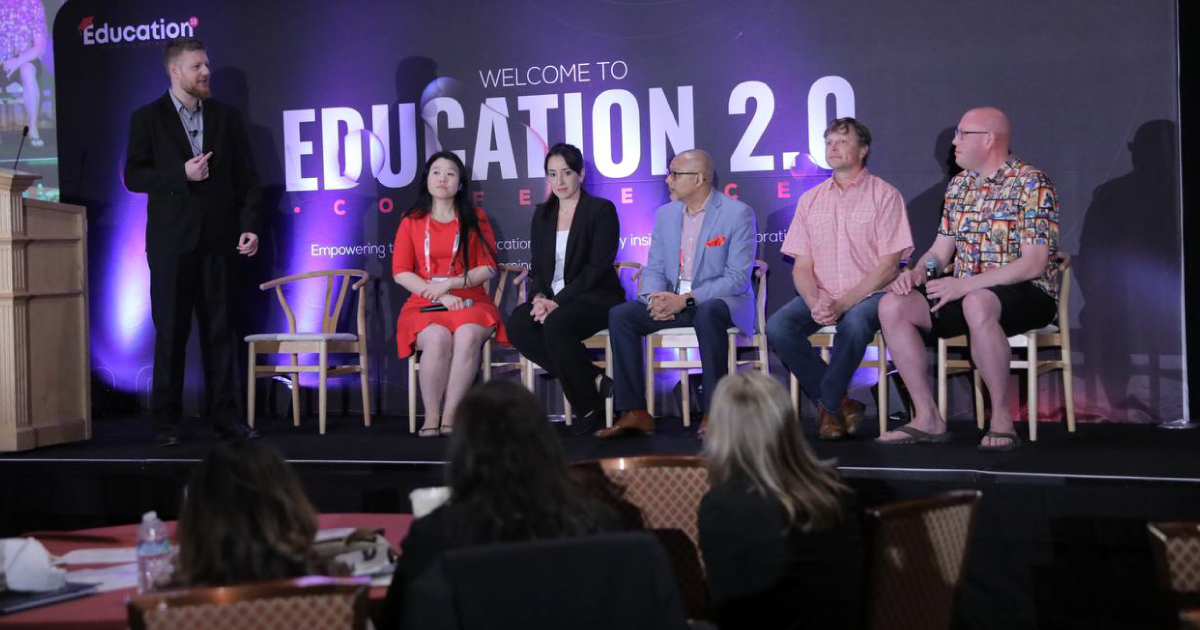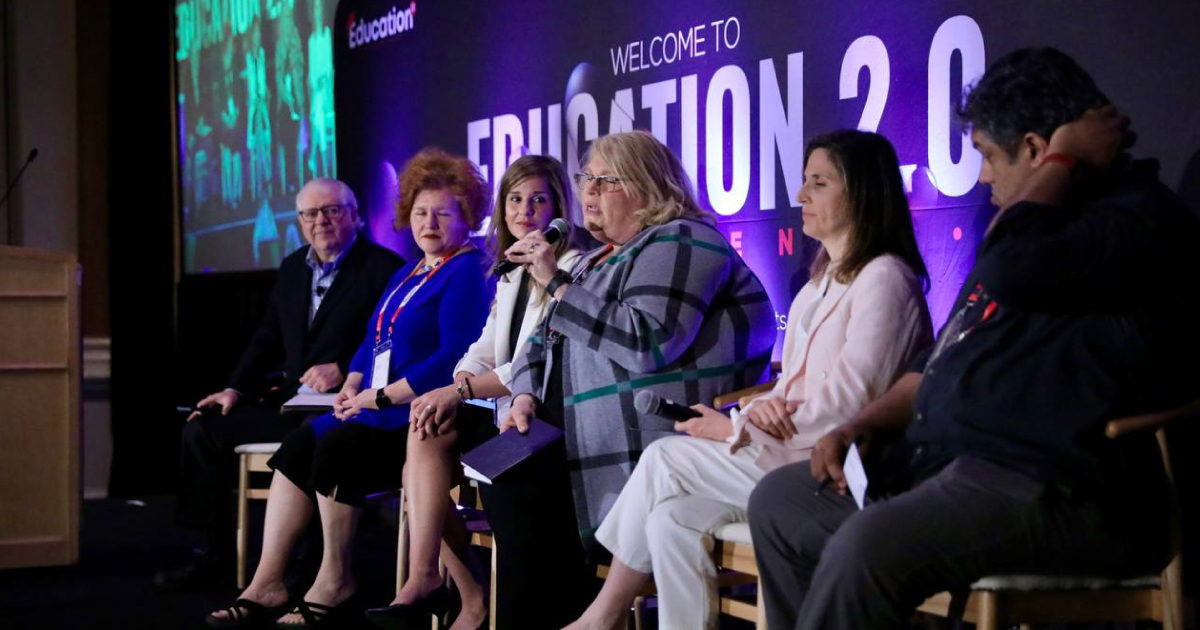
Education 2.0 Conference Explores How Bilingualism Gives Students an Academic Edge?
Posted on : May 26, 2025

In classrooms across the world, a quiet revolution is underway—one where students are switching between languages with ease, confidence, and surprising academic strength. As conversations around global education evolve, bilingualism has moved from a “nice-to-have” to a serious educational strategy. But does learning in two languages truly give students an academic edge?
At the Education 2.0 Conference, our anticipated education conference, we’ve seen this question come up time and again during our sessions. With educators, policymakers, and researchers in the room, the consensus is growing clearer: bilingualism isn’t just about speaking two languages. It’s about enhancing the way students think, learn, and prepare for the future.
Let’s explore what the research says about bilingualism’s far-reaching impact—cognitively, academically, and professionally.
The Bilingual Brain: A Cognitive Powerhouse
One of the most well-documented benefits of bilingualism lies in its effects on the brain. Students who grow up learning and using two languages demonstrate heightened activity in areas of the brain associated with executive function—skills like attention control, working memory, and problem-solving.
Many education experts, including those who have attended our education innovation summit, point to research showing that bilingual students are better at multitasking, switching between tasks, and tuning out distractions—skills that fall under what’s known as cognitive flexibility. These abilities are not just beneficial in the classroom—they’re essential in today’s fast-paced, ever-evolving world.
Notably, research by psychologist Ellen Bialystok and others has shown that bilingual individuals often outperform monolingual peers on tasks that require mental control, such as switching between tasks or managing conflicting information. These advantages are not just anecdotal—they’re backed by decades of neurological and behavioral studies.
Academic Performance: Are Bilingual Students At An Advantage?
While cognitive gains are often discussed, another key question is whether bilingual students do better academically. The answer isn’t always straightforward, but multiple studies indicate that bilingual learners tend to demonstrate stronger reading comprehension, metalinguistic awareness, and abstract thinking skills—especially when both languages are developed with academic proficiency.
Image Source: Faaacademy
In sessions at our education conference focused on multilingual classrooms, educators have shared how dual-language programs not only support language development but often raise overall academic achievement. When implemented well, these programs help students perform at or above grade level in subjects like math and science, debunking the myth that learning in two languages slows academic progress.
However, it’s important to note that context matters. The benefits are most apparent when instruction is high-quality, culturally responsive, and consistent across both languages. Simply offering a second language class is not the same as embedding bilingualism into the learning ecosystem.
Socio-Emotional & Cultural Literacy
Beyond grades and test scores, bilingualism nurtures something just as critical: empathy and cultural competence. When students learn more than one language, they also learn to see the world from multiple perspectives. This enhances their ability to connect with others from different backgrounds and to communicate across cultural lines—skills that are becoming increasingly vital in both global and local contexts.
At global education conferences, we often hear from school leaders who describe how bilingualism supports identity development, especially for immigrant or minority students. When a student’s home language is celebrated in school, they feel seen. That validation plays a powerful role in boosting confidence and emotional resilience.
Long-Term Career Value
Let’s fast forward. What happens when today’s bilingual students become tomorrow’s professionals?
The professional advantages of bilingualism are becoming harder to ignore. In industries ranging from healthcare and diplomacy to technology and international business, bilingual employees are in demand. Being able to communicate in more than one language not only expands job opportunities but also often leads to higher pay and global mobility.
The value of multilingualism in the workplace is often emphasized in conversations at several education conferences, particularly when discussing future-ready skills. Across industries, professionals recognize that employees who can communicate across languages and cultures bring a competitive advantage to global teams. They bridge communication gaps, build international partnerships, and bring cultural awareness into corporate strategy. For students, bilingualism can be a powerful differentiator in an increasingly competitive job market.
Addressing The Misconceptions
Despite growing evidence, some misconceptions about bilingualism still linger. One of the most common? That learning two languages causes confusion or delays language development. The reality, as research repeatedly confirms, is the opposite. Bilingual students may mix languages occasionally (a process called “code-switching”), but this reflects cognitive agility, not confusion.
Another myth is that bilingualism is only for elite schools or affluent communities. But in many parts of the world, multilingualism is the norm, not the exception. At the Education 2.0 Conference, we’ve highlighted grassroots programs that are proving bilingual education is scalable, inclusive, and transformative.
Conclusion: A Competitive And Cognitive Edge
So, does bilingualism give students an academic edge? From where we stand at the Education 2.0 Conference, the answer is a resounding yes. The evidence spans cognitive science, educational outcomes, emotional development, and long-term career success. But the real value of bilingualism isn’t just in the advantages it confers—it's in the mindset it fosters: curiosity, adaptability, and openness to the world.
As we continue to bring together education thought leaders from around the globe at our global education innovation summit, we’re encouraged to see bilingualism positioned not as a luxury but as a strategic priority in education reform. In a world that’s more interconnected than ever, learning in two languages isn’t just a skill. It’s a future-ready superpower.
FAQs
1. What cognitive benefits does bilingualism provide to students?
Bilingual students often develop stronger executive functions, such as attention control, memory, and problem-solving skills that are essential in both academic and real-world settings.
2. Will the Education 2.0 Conference explore topics like bilingual education?
While the conference covers a wide range of themes related to education and innovation, topics like bilingualism may be touched upon during sessions or discussions, depending on the speakers and agenda.
3. How does bilingualism influence a student’s ability to multitask?
Research shows that bilingual individuals are better at multitasking and switching between tasks due to improved cognitive flexibility.
4. What role does the Education 2.0 Conference play in promoting innovative education strategies?
The conference serves as a platform for showcasing and discussing cutting-edge educational practices, including the benefits of bilingualism and cognitive skill development.
5. How can I participate in the next Education 2.0 Conference?
You can visit the official conference website to register and learn more about upcoming editions held in the USA and Dubai. Here’s the website link: www.education2conf.com.











